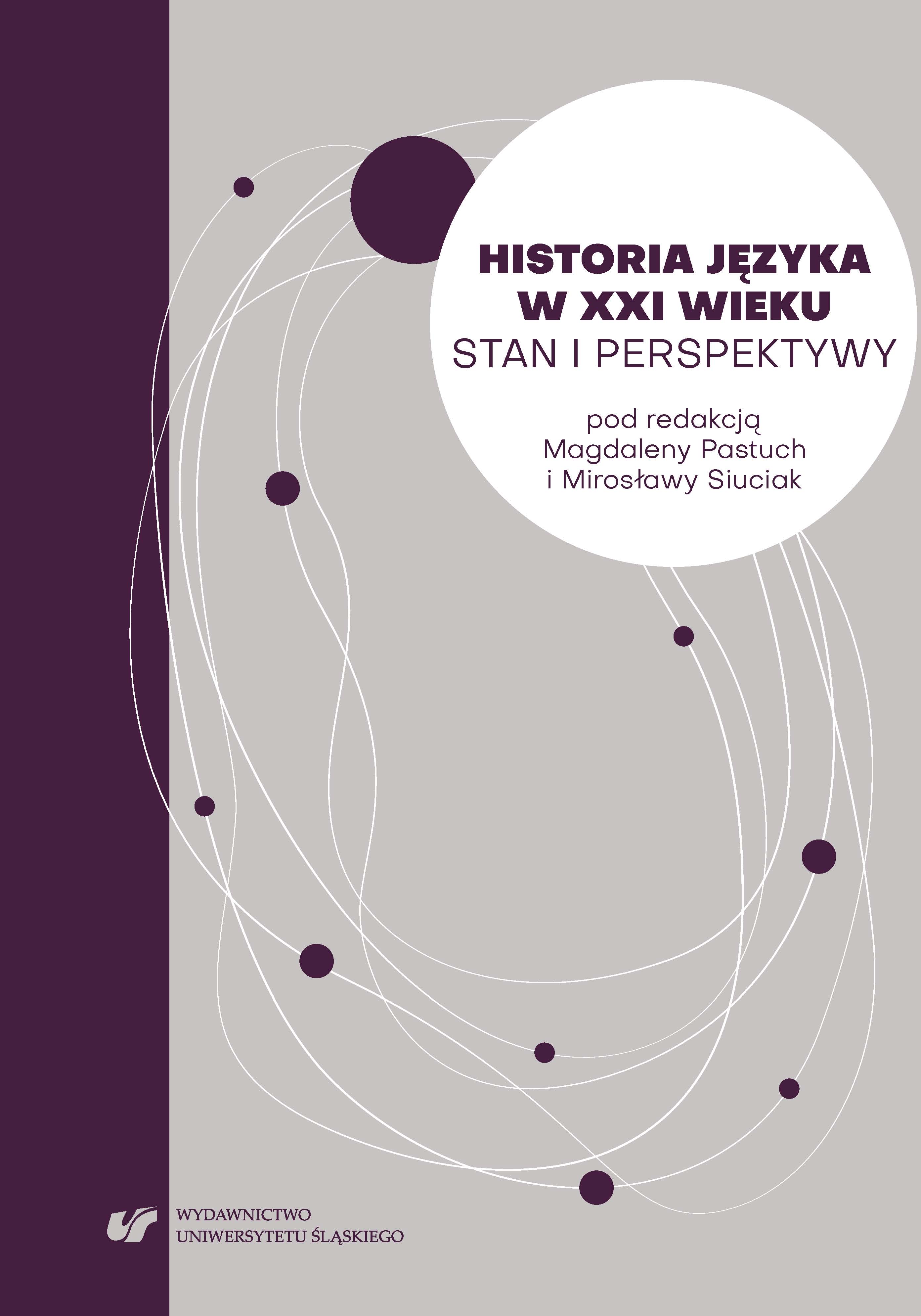Wyrażenia funkcyjne w średniowiecznej polszczyźnie z perspektywy składniowej
Functional expressions in the medieval Polish language from the syntactic perspective
Author(s): Tomasz Mika, Agnieszka Słoboda
Subject(s): Language studies, Language and Literature Studies, Cultural history, Theoretical Linguistics, Applied Linguistics, Middle Ages, Syntax, Western Slavic Languages
Published by: Wydawnictwo Uniwersytetu Śląskiego
Keywords: functional expressions; syntax; the Middle Ages; tendencies; processes
Summary/Abstract: The article presents the author’s book „Wyrażenia funkcyjne w średniowiecznej polszczyźnie z perspektywy składniowej” (Mika, Słoboda, 2015). This monograph is a syntactic addendum to the lexical research carried out as a part of the project “Polish functional expressions in diachronic perspective”. The problems discussed in this book are not homogeneous. Their different types are described in the subsequent chapters: at first the authors remind basic methodological difficulties in description of functional expressions, especially those appearing when you want to consider functional expressions in terms of syntax, not lexis. Then, there are indicated the problems with medieval source material and related interpretation difficulties. In the next part of the book the authors suggest their own methodology: the tendencies identified in „Składnia średniowiecznej polszczyzny” (Krążyńska, Mika, Słoboda, 2015) determine the direction of the interpretation of the processes, which functional expressions are subordinated to and participate in. These tendencies are: 1. Analytic tendency (from holism to analytism); 2. The tendency to autonomize the language (the disconnection of language and reality); 3. The categorization (from lexical to categorial semantics expressed in a specific form); 4. The structurization (from apposition to syntactic structures); 5. The condensation of content (from a very pure content of syntactic units to the cumulation of content in syntactic units).
The authors interpret selected linguistic processes in reference to these tendencies. The processes include inter alia: the coexistence of casual and prepositional forms, and the occurence of original particles as appositions of conjunctive function (which indicates analytical tendency); the introduction of elements expressing relation between events, and metatext elements (being, in the authors opinion, the symptom of autonomization); the process of transforming particles into connection indicators, leading to multifunctionality of conjunctions; the process of transforming object-related expressions into determinants of communicative intention (both processes are typical examples of formal categorization); the process of shaping of new categorial meanings of prepositional phrases, leading i.a. to the occurence of case government of verbs (being the effect of renewal of the categorial semantics): the process of shaping of correlated connection indicators and reported speech (seen these processes as the symptoms of structurization); the development of hypotaxis, being the symptom of the tendency to condensation of the content.
Book: Historia języka w XXI wieku. Stan i perspektywy
- Page Range: 628-635
- Page Count: 8
- Publication Year: 2018
- Language: Polish
- Content File-PDF

